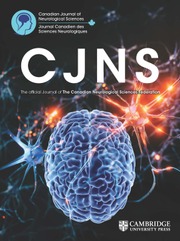Crossref Citations
This article has been cited by the following publications. This list is generated based on data provided by
Crossref.
Wallace, S
Wyatt, J
and
Taylor, P
1998.
Telemedicine in the NHS for the millennium and beyond.
Postgraduate Medical Journal,
Vol. 74,
Issue. 878,
p.
721.
Poon, W
Goh, Keith
Cocks, Robert
Kwok, Samuel
and
Lau, F L
1998.
The impact of video-consultation on neurosurgical health services.
Journal of Telemedicine and Telecare,
Vol. 4,
Issue. 1_suppl,
p.
111.
KUO, RAMSAY L.
ASLAN, PETER
DINLENC, CANER Z.
LEE, BENJAMIN R.
SCRENCI, DOMENIC
BABAYAN, RICHARD K.
KAVOUSSI, LOUIS R.
and
PREMINGER, GLENN M.
1999.
Secure Transmission of Urologic Images and Records over the Internet.
Journal of Endourology,
Vol. 13,
Issue. 3,
p.
141.
Kirkpatrick, Andrew W.
Brenneman, Frederick D.
McCallum, Andrew
Breeck, Karen
and
Boulanger, Bernard R.
1999.
Prospective Evaluation of the Potential Role of Teleradiology in Acute Interhospital Trauma Referrals.
The Journal of Trauma: Injury, Infection, and Critical Care,
Vol. 46,
Issue. 6,
p.
1017.
BRUNO, DIETER
DELVECCHIO, FERNANDO C.
and
PREMINGER, GLENN M.
1999.
Techniques in Endourology Digital Still Image Recording during Video Endoscopy.
Journal of Endourology,
Vol. 13,
Issue. 5,
p.
353.
Apple, Sherry L
and
Schmidt, John H
2000.
Technique for neurosurgically relevant CT image transfers using inexpensive video digital technology.
Surgical Neurology,
Vol. 53,
Issue. 5,
p.
411.
Dorman, Todd
2000.
TELEMEDICINE.
Anesthesiology Clinics of North America,
Vol. 18,
Issue. 3,
p.
663.
Hersh, William R
Helfand, Mark
Wallace, James
Kraemer, Dale
Patterson, Patricia
Shapiro, Susan
and
Greenlick, Merwyn
2001.
Clinical outcomes resulting from telemedicine interventions: a systematic review.
BMC Medical Informatics and Decision Making,
Vol. 1,
Issue. 1,
Doheny-Farina, Stephen
Callas, Peter W.
Ricci, Michael A.
Caputo, Michael P.
Amour, Judith L.
and
Rogers, Fred B.
2003.
Technical Communication and Clinical Health Care: Improving Rural Emergency Trauma Care through Synchronous Videoconferencing.
Journal of Technical Writing and Communication,
Vol. 33,
Issue. 2,
p.
111.
Hazebroucq, V.
and
Fery-Lemonnier, E.
2004.
Apports de la téléradiologie dans la prise en charge des urgences neuroradiologiques.
Journal of Neuroradiology,
Vol. 31,
Issue. 4,
p.
334.
Yaghmai, Vahid
Salehi, Sean A.
Kuppuswami, Sivaraja
and
Berlin, Jonathan W.
2004.
Rapid wireless transmission of head CT images to a personal digital assistant for remote consultation1.
Academic Radiology,
Vol. 11,
Issue. 11,
p.
1291.
Ganapathy, K
2004.
Telemedicine in the management of head trauma: An overview.
The Indian Journal of Neurotrauma,
Vol. 1,
Issue. 1,
p.
1.
Poca, M.A.
Sahuquillo, J.
Arikan, F.
Domenech, P.
Pedraza, S.
Maideu, J.
Vila, X.
Sánchez, E.
and
Garnacho, A.
2004.
Aplicaciones de la telerradiologia al cribaje y manejo de los pacientes con un traumatismo craneoencefálico. Resultados de un estudio piloto de interconexión entre un hospital comarcal y un centro de referencia neuroquirurgico.
Neurocirugía,
Vol. 15,
Issue. 1,
p.
17.
Ganapathy, K.
2005.
Telemedicine and neurosciences.
Journal of Clinical Neuroscience,
Vol. 12,
Issue. 8,
p.
851.
Heinzelmann, Paul J.
Williams, Christy M.
Lugn, Nancy E.
and
Kvedar, Joseph C.
2005.
Clinical Outcomes Associated with Telemedicine/Telehealth.
Telemedicine and e-Health,
Vol. 11,
Issue. 3,
p.
329.
Lienemann, Bernhard
Hodler, Juerg
Luetolf, Marcus
and
Pfirrmann, Christian W. A.
2005.
Swiss teleradiology survey: present situation and future trends.
European Radiology,
Vol. 15,
Issue. 10,
p.
2157.
Bruder, N.
2007.
Quand faut-il décider d'un transfert en milieu neurochirurgical spécialisé?.
Annales Françaises d'Anesthésie et de Réanimation,
Vol. 26,
Issue. 10,
p.
873.
Kreutzer, Juergen
Akutsu, Hiroyoshi
Fahlbusch, Rudolf
Buchfelder, Michael
and
Nimsky, Christopher
2008.
Teleradiology in neurosurgery: experience in 1024 cases.
Journal of Telemedicine and Telecare,
Vol. 14,
Issue. 2,
p.
67.
Sung, Jeffrey C.
Sodickson, Aaron
and
Ledbetter, Stephen
2009.
Outside CT Imaging Among Emergency Department Transfer Patients.
Journal of the American College of Radiology,
Vol. 6,
Issue. 9,
p.
626.
HORI, Emiko
NISHIMURA, Shinjitsu
MINO, Masaki
FUJITA, Tomoaki
SAKATA, Hiroyuki
and
NISHIJIMA, Michiharu
2009.
The Importance of Telemedicine Using an Image Transfer System in the Case of Aneurysmal Subarachnoid Hemorrhage.
Surgery for Cerebral Stroke,
Vol. 37,
Issue. 1,
p.
26.




